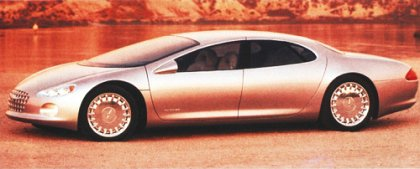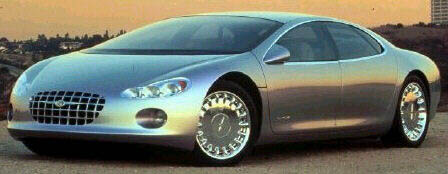1996 Chrysler LHX
- Story Cars

- Oct 25, 2021
- 2 min read
Defined as a classic for tomorrow, the 1996 Chrysler LHX concept vehicle deftly blended the best aesthetic elements of the past with a modern interpretation and cab-forward architecture. An extremely fast windshield and rear window, large 20-inch rear wheels, and a beautifully sculpted silhouette gave this futuristic luxury sedan an extremely aggressive look. But instead of going overboard with futuristic gadgets and design, Chrysler designers combined the concept look with the classic feel luxury buyers look for and have come to expect from Chrysler.
The LHX's interior combines graceful, simple forms and sophisticated materials that speak of craftsmanship and departs from typical mass-production molding techniques. LHX had plenty of power under the hood, too, with a 250-horsepower 3.5-liter, single overhead cam, 24-valve, V6 engine. The Chrysler LHX Concept was referred to by Chrysler Executive Vice President of Product Design and International Operations Tom Gale as a 'heritage design.' It incorporated the company's past while looking towards the future. It showcased many aesthetic and mechanical features later found on the next-generation Chrysler luxury sedans while introducing radical visual cues and futuristic technologies. It was given an aerodynamic design with an egg-crate grille surrounded on either side by tri-element ellipsoid beam headlights. In the back was a sculpted deck lid. The paintwork was Silver Green paint which subtly changed its hue depending on ambient light conditions. The wheelbase measured 124 inches and had an overall length of around 207 inches. It had a front engine and front-drive configuration with a steel unibody structure and exterior panels.
After the Viper, Chrysler once again impressed everyone in 1996, this time with an unusual interpretation of the canonical form of a three-volume sedan. The car resembled a beast preparing to jump. Later, this compositional technique was called cab forward and replicated by all the studios of the Big Three.
The formidable "muzzle" of the Viper and the "predatory" silhouette of the LHX sedan fully corresponded to the biological direction in design, the style of which has been widely used since the second half of the 80s. The appeal to soft lines and radius surfaces of wildlife is quite a natural protest against the dominance of High-tech and Neo-tech styles, which determined the technocratic direction in the shaping of things.
Source: Н. Розанов, Журнал "Автомобили" 12-1998 (translated from Russian); Chrysler
Images: Concept Car Central, Chrysler Corporation

%20(4)_edited.png)






































Comments